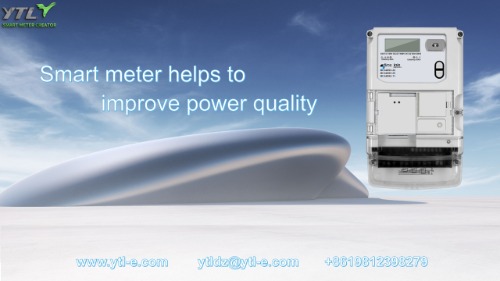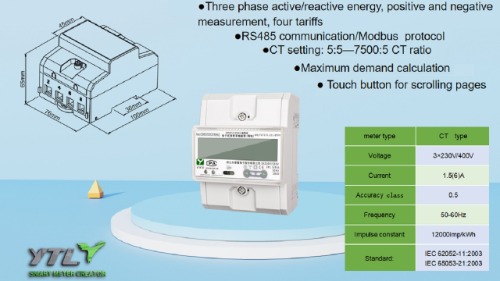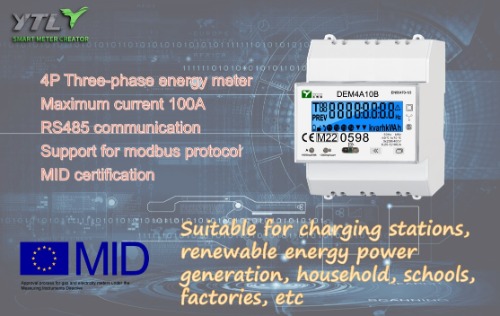Tariff power meter divides the day into different electricity price periods and records energy consumption. It encourages rational electricity use and peak load shifting to optimize energy allocation and stabilize power systems. It can change consumers' electricity habits by displaying daily power consumption and cost savings. Supporting systems and education are necessary for effective implementation. Smart meters are important for smart grids, and tariff power meters have evolved into smart meters with expanded functions.
Tariff power meter can measure and record the use of electric energy according to different time periods. Usually, a day is divided into multiple periods, and the electricity in each period corresponds to a different electricity price. the price of electricity in certain periods can also be the same. The main purpose of using tariff power meter is to encourage users to use electricity rationally, reduce electricity consumption during peak hours as much as possible, and increase electricity consumption during off-peak hours. In this way, the power load can be distributed to different time periods to improve the utilization rate of power generation equipment and optimize energy allocation. At the same time, it can also reduce the situation of excessive power load in a single period of time, thereby ensuring the stable operation of the power system.
The installation and use of tariff power meter will change people's electricity consumption habits. Since different electricity prices are used during different time periods, users can more clearly see the cost differences between consuming electricity at different times. Therefore, users may consciously adjust their electricity consumption habits by shifting high-power-consuming activities to low-price periods in order to reduce electricity costs. Such adjustments will not only help alleviate the pressure on power supply, but also help cultivate users' habits of using electricity reasonably and shifting peak hours. To achieve this goal, it is not sufficient to simply install and utilize a tariff power meter. The application of a tariff-based power meter is the foundation and premise for managing electricity consumption. Supporting systems and regulatory measures are required. The power sector needs to scientifically divide peak and trough time periods based on historical data of power consumption at the generation end as well as among end-users, and formulate fair and reasonable electricity price calculations and execution. At the same time, it is also necessary to raise public awareness of the cherishment and rational use of power resources through publicity and education. Additionally, we must protect users' right to know and their right to participate.

The power consumption status is displayed in the user's app daily. The total power, peak power, valley power, peak power unit price, and valley power unit price of the day can be intuitively felt by experiencing the benefits brought about by installing a tariff power meter. Every year, the Power Management Department sends an annual electricity consumption report analysis to users that clearly and detailedly explains how much money has been saved in total after using the tariff power meter during this year. Since installing and using a smart power meter, my electricity consumption habits have subtly changed. In our place, from 8:00 AM to 10:00 PM is considered as peak power hours while the remaining time belongs to valley power. Electric kettles, air conditioners, electric water heaters, etc. Consume the most electricity at home. When you wake up at 7 am every morning, you can boil water and fill the kettle for the entire day. Turn on the air conditioner in the room after 10 o'clock at night, take a bath and rest. As much as possible, large energy consumption happens during the valley power period. The tariff power meter is an effective economic measure and technical solution that enables the calculation of various electricity charges and prices. It helps to prevent unnecessary waste and achieves the goal of energy conservation.

The emergence of smart electricity meters is aimed at resolving the conflict between energy production and consumption, as well as enhancing the economic benefits of generating and supplying power. It can prompt users to reduce peak power consumption and increase low-peak power consumption, thereby adjusting the load and increasing the load tariff. It has a positive significance for both the society and the users. Currently, numerous countries are implementing smart grids to enhance the monitoring and control of power grid operations while maintaining their quality. Smart meters are extremely important as the terminal sensors in smart grids. All smart meters have the function of a tariff power meter. From a historical perspective, tariff power meters have expanded their functions in response to market demands and have evolved into smart meters.

 English
English 中文简体
中文简体









.jpg?imageView2/2/w/500/h/500/format/png/q/100)

.jpg?imageView2/2/w/500/h/500/format/png/q/100)


